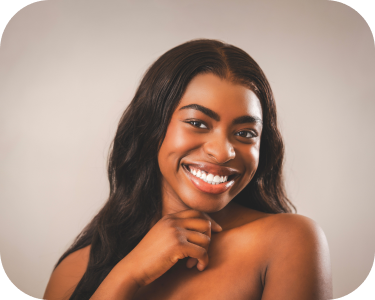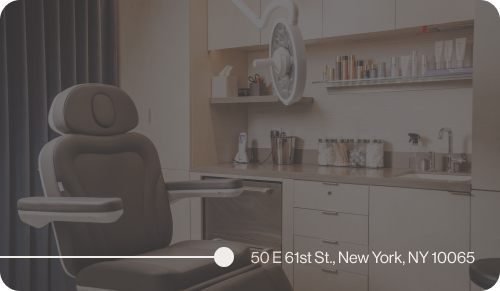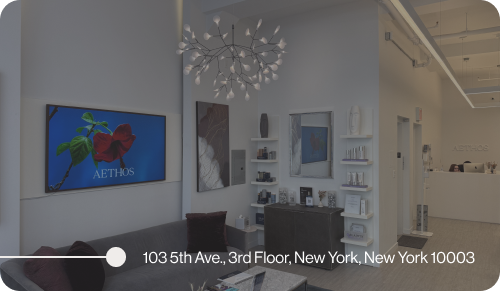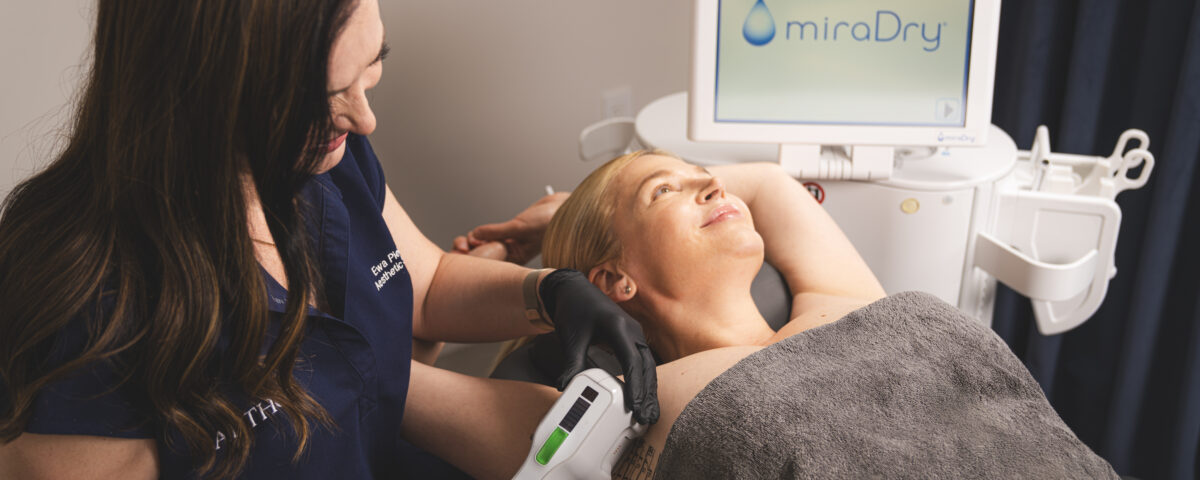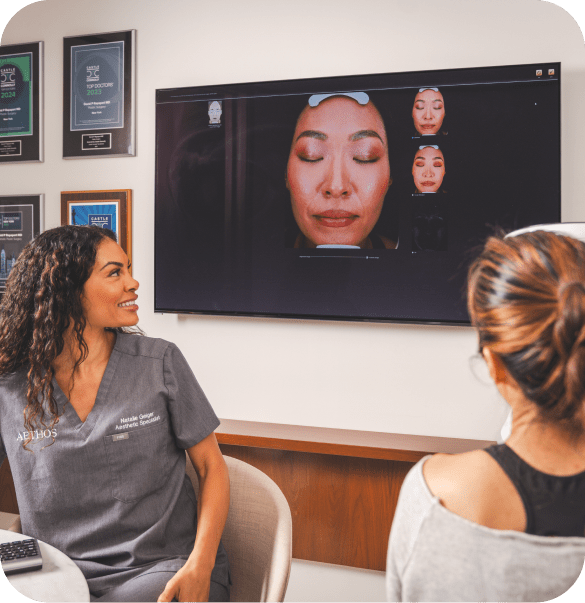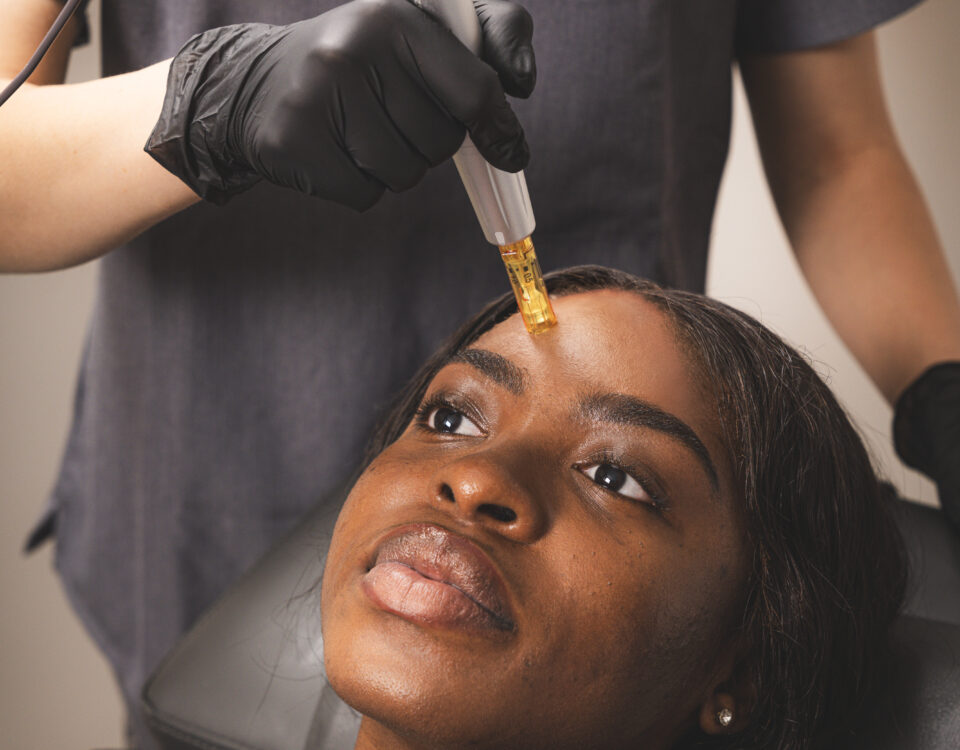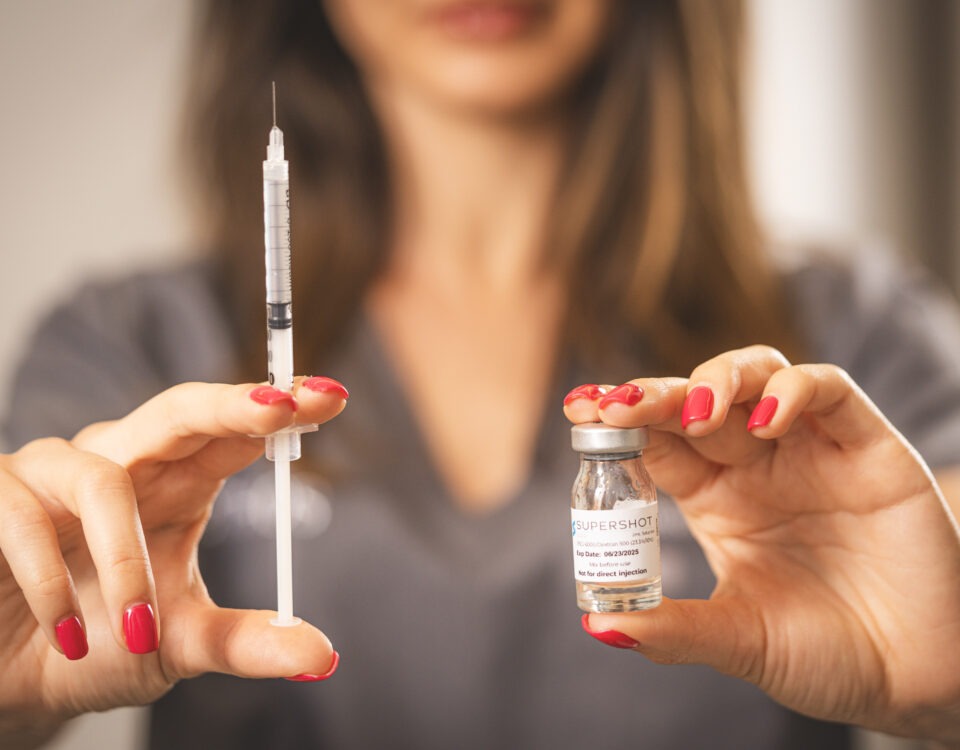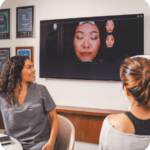
Spring 2025: Latest Advances in Aesthetic Treatments
March 16, 2025Struggling with excessive sweating? You’re not alone. Hyperhidrosis affects 4.8% of the U.S. population, disrupting daily life for millions. But the good news is there are effective treatments available – from simple antiperspirants to advanced procedures like Botox and miraDry.
Here’s a quick overview of your options:
- At-Home Solutions: Start with medical-grade antiperspirants (e.g., Drysol) or non-invasive treatments like iontophoresis.
- Office-Based Treatments: Botox reduces sweat by 50–90% for 4–6 months, while miraDry offers permanent underarm sweat reduction.
- Surgical Options: ETS surgery is a last resort but comes with risks like compensatory sweating.
- Daily Tips: Wear breathable fabrics, manage sweat triggers, and rotate shoes.
Quick Comparison of Key Treatments:
| Treatment Type | Success Rate | Duration | Cost |
|---|---|---|---|
| Antiperspirants | 82% | Daily use | Affordable |
| Botox | 94% | 4–6 months | $1,500/session |
| miraDry | 89% | Permanent | $2,500 @ Aethos |
| ETS Surgery | 68–100% | Permanent | Varies |
If sweating is impacting your quality of life, consult a healthcare provider to find the best solution for you.
What does Botox for Underarm Sweating Cost (what does miraDry cost)?

Office-Based Treatments
When daily remedies and simple treatments aren’t enough, office-based options can offer more effective solutions with minimal recovery time.
Botox for Sweat Control
Botox is a well-established method for reducing sweat gland activity by blocking acetylcholine signals. Here’s what patients can expect:
- 50% or more reduction in underarm sweating lasting over 6 months
- Up to 90% decrease in sweat production within 2 weeks
- Overall sweat reduction exceeding 85%
This FDA-approved treatment is specifically designed for excessive underarm sweating, though it is also used off-label for areas like the palms, face, and feet. While Botox provides temporary relief, the miraDry® procedure offers a longer-lasting solution for underarm sweating.
miraDry® Procedure
miraDry is a non-invasive, FDA-cleared treatment that uses microwave technology to permanently address underarm sweat, odor, and even hair. Research highlights its effectiveness:
- 82% average sweat reduction and odor elimination in 89% of patients
- 2-point improvement on the Hyperhidrosis Disease Severity Scale in 83.3% of treated underarms
- 90% patient satisfaction rate
The procedure takes about an hour, costs around $3,000, and sometimes requires a follow-up session for best results.
Preparation and Aftercare Tips
To achieve the best outcomes, follow these steps:
- Before treatment:
- Shave underarms 4-6 days prior
- Stop using antiperspirants 24 hours before
- Wear loose, comfortable clothing
- After treatment:
- Apply prescribed antibiotic creams
- Use cold compresses to reduce swelling
- Take over-the-counter pain relievers if needed
- Avoid antiperspirants for 2 weeks
“The treatment of primary axillary hyperhidrosis can be rewarding using noninvasive microwave technology…patients can now benefit from permanent targeted sweat reduction. The microwave treatment has been shown to be safe and effective in >6,000 procedures to date.” – Carolyn Jacob, MD
Most individuals return to normal activities within a few days, although some may experience temporary swelling or tenderness.
Surgical Options
When non-surgical treatments don’t work, surgery might be an option. While it can provide lasting results, it comes with its own risks. Here’s a look at well-known surgical methods and some newer approaches being studied.
ETS Surgery
Endoscopic Thoracic Sympathectomy (ETS) is a surgical procedure for those who haven’t found relief with other treatments. This involves cutting or clamping the sympathetic nerves through small incisions in the armpit while under general anesthesia. Studies show it can reduce sweating in the face, hands, and armpits, with success rates ranging from 68% to 100%.
| Side Effect | Occurrence Rate | Description |
|---|---|---|
| Compensatory Sweating | 60–98% | Increased sweating in other areas; severe cases reported in 10–40% |
| Gustatory Sweating | 17–57% | Sweating on the face triggered by eating or smelling food |
| Recurrence | 1–5% | Sweating may return within the first year or later |
| Horner’s Syndrome | Up to 0.8% | Temporary drooping eyelids and constricted pupils |
| Heart Rate Changes | Common | Around 10% reduction in heart rate following surgery |
Due to these potential risks, ETS has been banned in Sweden, and most specialists recommend it only after all other options have been tried.
“All patients have to be willing to accept some degree of compensatory sweating.” – Dr. James Headrick, thoracic surgeon
New Treatment Research
To reduce the risks associated with ETS, researchers are exploring alternative techniques:
- Reversible Nerve Clipping: Instead of cutting nerves, this method uses removable clips, offering a less permanent approach.
- Suction-Curettage: A minimally invasive option targeting underarm sweating with fewer side effects.
- Emerging Technologies: Treatments like lasers, microwaves, and Botox are being studied for their ability to deliver similar results with lower risk.
These advancements aim to improve outcomes while minimizing complications for patients seeking relief.
Selecting Your Treatment
When dealing with hyperhidrosis, a variety of therapies are available – from simple topical solutions to advanced procedures. Choosing the right treatment depends on your specific needs and situation.
Treatment Decision Guide
Selecting the most suitable hyperhidrosis treatment involves evaluating several key factors. The Hyperhidrosis Disease Severity Scale (HDSS) is a helpful tool for assessing how the condition impacts your life and predicting how you might respond to different treatments.
| Factor | What to Consider | Examples |
|---|---|---|
| Severity | How it affects daily life (HDSS score) | Mild: Over-the-counter options may work Severe: Look into advanced treatments like miraDry |
| Cost | Upfront and ongoing expenses | Botox: ~$1,500/session (50 units per armpit) miraDry: ~$1,900 for the first session, ~$900 for follow-up |
| Duration | How long the results last | Temporary: Botox (4-6 months) Permanent: miraDry |
| Side Effects | Risks or complications | Non-invasive: Minimal risks Surgical: Potential for compensatory sweating |
These factors can help you decide when self-care is no longer enough and it’s time to consult a professional.
When to See a Doctor
You should consider seeing a doctor if:
- Hyperhidrosis is disrupting your daily life
- Over-the-counter options aren’t working
- You’re considering advanced treatments but need expert guidance
- Your family history suggests a genetic link
“If your symptoms persist and don’t seem to be improving, it’s crucial to reach out to your doctor”
Multi-Treatment Approaches
Sometimes, combining treatments can be more effective. The International Hyperhidrosis Society emphasizes:
“Everyone’s experience with this condition is different. So please be patient, explore all your options, explore combinations of options, adjust techniques, and work with your healthcare team to find the best treatments for your individual situation”
| Primary Treatment | Complementary Option | Expected Outcome |
|---|---|---|
| miraDry | Prescription antiperspirants | Up to 82% sweat reduction with added daily protection |
| Botox | Iontophoresis | Longer relief between injections |
| Non-surgical methods | Lifestyle adjustments | Improved overall results |
“The best way to determine the right solution for you is to talk with a physician who’s experienced with both BOTOX and MiraDry. Based on your medical history, your concerns, and what you hope to get out of treatment, your doctor can help you choose the best option for your goals and budget”
Summary
The treatment options discussed have shown varying levels of effectiveness. Studies reveal that 82% of patients report satisfying outcomes with aluminum chloride solutions, while 94% experienced at least a 50% reduction in sweat production after OnabotulinumtoxinA treatments within just 4 weeks.
| Treatment Type | Success Rate | Duration | Average Cost |
|---|---|---|---|
| Prescription Antiperspirants | 82% satisfaction | Daily use | Most affordable |
| Botulinum Toxin | 94% reduction | 4–6 months | $150–$450 per area |
| miraDry | 89% initial response (69% maintained effect at 12 months) | Permanent | $2,500 @ Aethos |
| Oral Medications | 67% response | Requires continuous use | Varies by prescription |
These figures highlight the benefits of starting with simpler treatments, like prescription-strength antiperspirants, before moving to more advanced options.
“Despite the serious negative impact hyperhidrosis has on the lives of those who have it, most never seek treatment.”
Interestingly, combining treatments can lead to better results. For example, one study found that 50% of patients achieved complete sweat reduction, while others saw a 75–100% decrease when aluminum chloride hexahydrate 15% in a salicylic acid 2% gel was used alongside botulinum toxin type A therapy.
Working with a specialist is crucial to creating a personalized plan. Often, combining different methods offers the best chance of success.


